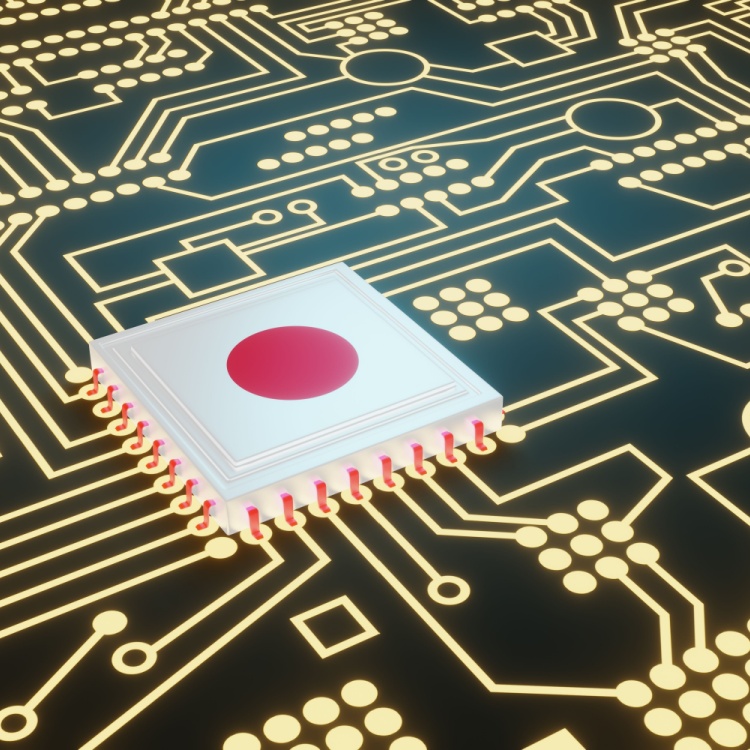Japan Revives Its Chip Industry

Japan has unveiled an ambitious plan to strengthen its domestic chip production, including over 10 trillion yen (approximately $65 billion) in financial support by 2030. As part of broader efforts to diversify its semiconductor supply chain, the government plans to triple sales of domestically produced chips to 15 trillion yen (around $100 billion) annually by the decade's end. This news reflects Japan’s determination to innovate and expand its presence in the manufacturing industry.
The country’s proposed funding is set to benefit Rapidus, a state-backed chip venture launched in 2022. Supported by major domestic firms like Toyota and Sony, and in collaboration with IBM and Belgian research group Imec, Rapidus aims to begin mass production of advanced 2-nanometer (nm) chips by 2027 in Hokkaido. These cutting-edge chips, capable of handling complex tasks with greater efficiency, represent a significant leap in the industrial market.
Rapidus has secured more than $2 billion in government support to drive its mission of mass-producing these logic chips by 2027. These chips, essential for processing information and executing tasks in electronic devices, are critical to technologies like AI and machine learning.
Rapidus chairman Tetsuro Higashi emphasized the company’s role as Japan’s last chance to reclaim a top position in the global semiconductor arena, delivering innovative industrial solutions and competing with industry giants.
An overview of Japan’s semiconductor industry
During the 1980s and 1990s, Japan exemplified manufacturing excellence, dominating over half of the global semiconductor market. Industry leaders like Hitachi and Toshiba drove innovation in memory chips, microprocessors, and essential components. Japan's expertise also extended to semiconductor equipment and materials, solidifying its critical role in the global production ecosystem.
The country’s chip sector faced a downturn in the early 2000s as competitors like Samsung and Taiwan Semiconductor Manufacturing Company (TSMC) surged ahead with advanced production methods. Challenges such as outdated infrastructure, insufficient investment in emerging technologies, and resistance to adopting outsourced manufacturing models—where chip design and engineering are prioritized while production is assigned externally—led to a decline in Japan's global market share.
According to the ARC Group, Japan's semiconductor market has experienced a steep decline over the decades. Once accounting for over half of global output in 1989, its share dwindled to just 9% by 2022. This sharp drop highlights the challenges Japan faces in maintaining competitiveness within the evolving manufacturing industries.
![]()
How Japan plans to bounce back
While Japan is no longer at the forefront of semiconductor production, it remains a leader in specialized materials like silicon wafers and semiconductor fabrication tools. These strengths provide a solid foundation for efforts to rejuvenate its semiconductor industry by building on established expertise.
-
Domestic focus
Amid the widespread challenges in supply chain management caused by geopolitical tensions, Japan’s efforts to bolster its domestic manufacturing capabilities reflect a growing global trend toward reducing dependence on external suppliers.
-
Boosting manufacturing capabilities
Japan's focus on chip subsidies, primarily aimed at boosting manufacturing capacity, presents an opportunity to broaden its role within the semiconductor supply chain. By leveraging these investments, the country can diversify its contributions beyond production, strengthening its overall position in the industry.
-
Embracing cutting-edge design
Rapidus representatives noted that 2nm chip architecture significantly differs from 3nm designs, making mass production a new and complex undertaking for the entire industry. By tackling this challenge, Japan aims to advance its expertise in product design and development, solidifying its position as a leader in cutting-edge semiconductor innovation.
-
Strategic partnerships
Japan is reestablishing its semiconductor industry by attracting investments from global leaders like TSMC, Samsung, and Intel through government subsidies. These efforts focus on producing key components while boosting vertical integration across the supply chain. Collaboration agreements with nations like the U.S., U.K., and Taiwan aim to advance next-generation semiconductor research.
Challenges to overcome
However, Japan faces significant hurdles as it works to upgrade and adapt its chip manufacturing capabilities to meet modern industry standards.
-
Falling behind in technology
While heavily investing in 2nm chip technology, Japan needs to catch up to companies like TSMC and Samsung, which are set to launch commercial 2nm production by 2025. This early lead is crucial in the semiconductor industry, where staying ahead in technology is key. Despite the strengths of its memory chips, Japan struggles with logic chip development.
-
Labor gaps
A shortage of skilled workers presents a major obstacle, even with Japan’s strong education system and history of innovation. The country trails behind others like South Korea and Taiwan in producing STEM graduates, crucial for this sector. Compounding the issue is Japan’s declining birth rate, which hit a record low of 1.2 in 2023, signaling a shrinking workforce. By 2040, the working-age population is projected to drop by 20%, potentially leaving an 11-million-worker gap and deepening the labor crisis.
-
International conflicts
The semiconductor industry is closely linked to global politics, with Japan’s increasing partnerships with the U.S. and Western nations potentially creating tensions with China, a rising leader in the field. Furthermore, the fluctuating nature of the global semiconductor market, influenced by changes in trade regulations, technology limitations, and regional tensions, could complicate Japan’s efforts to strengthen its position in the sector.
-
Changes in U.S. regulations
Japan, as a key ally of the United States in the Asia-Pacific, remains vulnerable to shifts in U.S. chip policies, especially if they become more isolationist or protectionist. With President Trump favoring domestic-focused strategies to safeguard industries, Japan faces potential risks. Historical precedents, such as U.S. actions against Japanese chip makers in the 1980s over product dumping allegations, highlight the basis for these concerns.
Japan is striving to reclaim its position as a leader in the global semiconductor industry through government investments, strategic collaborations, and a focus on advanced technologies. This effort aligns with broader goals of enhancing technological competitiveness and supply chain resilience. However, success will require addressing key challenges, including workforce shortages, technological disparities, and strong competition from other countries. As one of the Top 20 EMS companies in the world, IMI has over 40 years of experience in providing electronics manufacturing and technology solutions.
As one of the Top 20 EMS companies in the world, IMI has over 40 years of experience in providing electronics manufacturing and technology solutions.
We are ready to support your business on a global scale.
Our proven technical expertise, worldwide reach, and vast experience in high-growth and emerging markets make us the ideal global manufacturing solutions partner.
Let's work together to build our future today.
Other Blog


